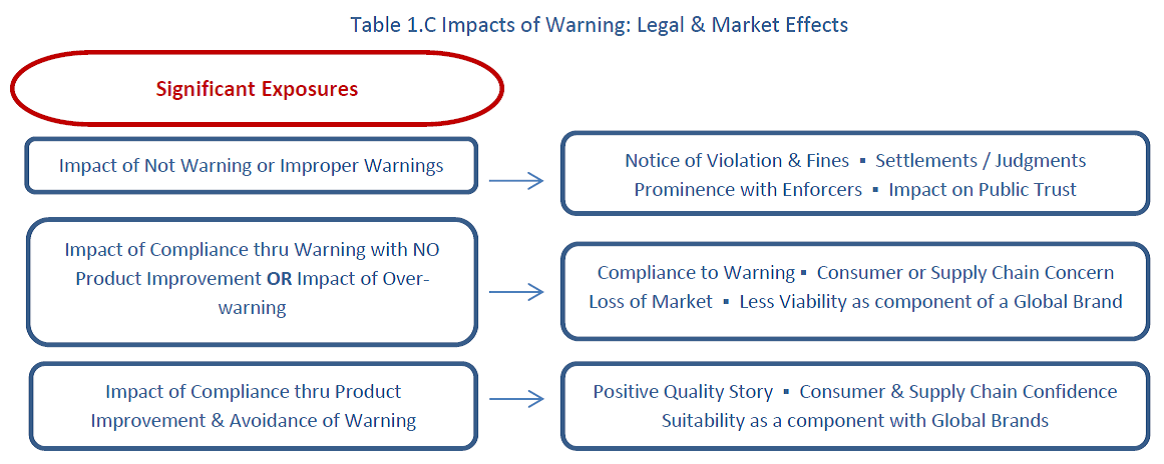Proposition 65 or PROP 65 for short, also known as the Safe Drinking Water and Toxic Enforcement Act of 1986 is a statute adopted in California via the people’s vote. Through the OEHHA (Office of Environmental Health Hazard Assessment), California publishes a list of over 850 chemicals or substances known to cause cancer or reproductive toxicity.
You can find this list here: https://oehha.ca.gov/proposition-65/proposition-65-list
Under this law, businesses with 10 or more employees are required to post warnings when significant exposures to these listed chemicals are knowingly and intentionally made through products they make, store or sell, or if environments owned and operated by those businesses expose the public or its workers to those substances. For products, businesses don’t need to be in California to be under this obligation; if it transacts products in the state directly or indirectly, PROP 65 rules would apply.
Those rules are encapsulated under CHAPTER 6.6 of the California Health Safety Code, which state:
25249.5.
Prohibition On Contaminating Drinking Water With Chemicals Known to Cause Cancer or Reproductive Toxicity. No person in the course of doing business shall knowingly discharge or release a chemical known to the state to cause cancer or reproductive toxicity into water or onto or into land where such chemical passes or probably will pass into any source of drinking water, notwithstanding any other provision or authorization of law except as provided in Section 25249.9.
25249.6.
Required Warning Before Exposure To Chemicals Known to Cause Cancer Or Reproductive Toxicity. No person in the course of doing business shall knowingly and intentionally expose any individual to a chemical known to the state to cause cancer or reproductive toxicity without first giving clear and reasonable warning to such individual, except as provided in Section 25249.10.
Simply put, recognizing that a business can subject the public to significant exposures of a listed chemical, it must either eliminate or significantly reduce that exposure, or if it is unable to do so, it must warn the public through appropriately worded and documented labels and notifications.

Enforcement is done through several means, one being through the California Attorney General’s Office, but it may also be enforced by any district or city attorney for cities with populations of a certain size, or by any individual acting on behalf of the public interest such as consumer advocacy groups, or law firms. Failure to warn where significant exposures are proven to be found can result in fines of up to $2500.00 per day for every single violation.

While often referred to as a “labeling law”, this description belies the complexity of meeting PROP 65 requirements and the costly impact non-compliance has on businesses – either directly through the cost of enforcement actions, or indirectly, through the loss of market opportunities when businesses fail to willingly improve their products, processes or environments.

PROP 65 enters its third decade in a time of market enforced regulations. Though the current US administration is famously regulation averse, the fact remains that global markets continue to demand reductions in the environmental impact which products and businesses create, and meeting these demands are part and parcel of being competitive.
The State of California has also shown no signs of relent against the oppositional stance federal government has taken to environmental regulations. In keeping with being the world’s sixth largest economy, it continues to spearhead state environmental initiatives and has independently committed to the Paris Accord.
For more information on Warning Labels and upcoming changes, see our PROP 65: Warning Changes 2017. If you’d like to hear more about how we can help you comply with better films, please contact us at info@pvctech.com or call us at 1-888-782-323, our staff will be happy to help you.
The regulatory text and supporting rulemaking documents can be viewed or downloaded from the State of California OEHHA website.

